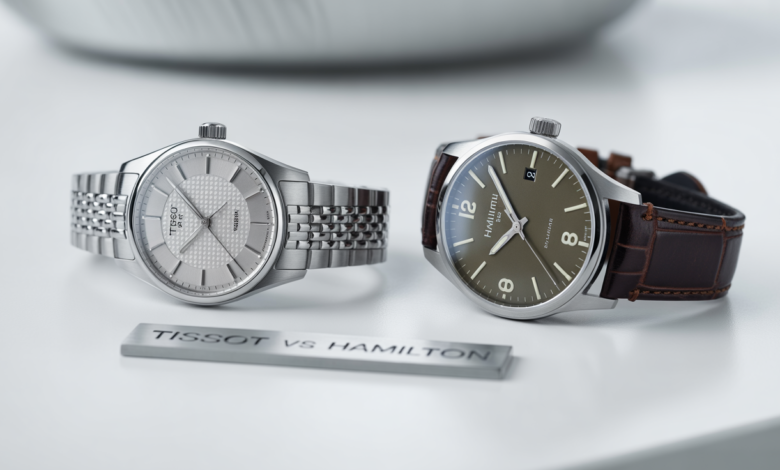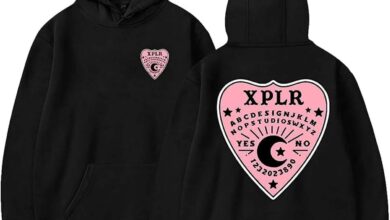Tissot vs Hamilton: Comparing Two Swiss Watchmaking Icons

When it comes to Swiss watchmaking, the names Tissot and Hamilton often appear on the shortlist of accessible luxury brands. Both have a rich history, a reputation for quality, and a loyal following among watch enthusiasts.
But when you’re looking to add one of these brands to your collection, you may wonder: which one is better suited to your style and needs? This article dives into a detailed comparison of Tissot and Hamilton, looking at their history, design philosophy, craftsmanship, collections, and overall value. Whether you’re buying your first Swiss timepiece or expanding your collection, understanding the strengths of each brand will help you choose wisely.
History and Heritage
Tissot
Founded in 1853 in Le Locle, Switzerland, Tissot has been a key player in the evolution of watchmaking for over 170 years. From producing the world’s first mass-produced pocket watch to introducing innovative materials like wood, stone, and plastic into watch cases, Tissot is known for its forward-thinking and affordable luxury.
Tissot has also been heavily involved in sports, serving as the official timekeeper for events like the NBA, Tour de France, and MotoGP. This connection to sports gives Tissot a dynamic and modern image while maintaining its Swiss heritage.
Hamilton
Hamilton’s story begins in 1892 in Lancaster, Pennsylvania, USA, where it built a reputation for producing accurate railroad watches that kept American trains running on time. Over time, Hamilton became famous for its military watches worn by soldiers during both World Wars and its appearances in Hollywood films, including classics like Men in Black and Interstellar.
In 1969, Hamilton moved its operations to Switzerland, where it joined the Swatch Group and aligned itself with Swiss standards of watchmaking. Today, Hamilton combines its American roots with Swiss precision.
Both brands boast impressive histories, but their backgrounds give them slightly different personalities — Tissot as a sports and innovation-driven brand, and Hamilton with a vintage, cinematic, and military-inspired appeal.
Craftsmanship and Movements
Tissot vs Hamilton both offer excellent build quality, especially considering their price points. Since both are part of the Swatch Group, they use reliable ETA movements (also owned by Swatch) and benefit from shared technology.
Tissot often focuses on modern designs and uses quartz and automatic movements, offering excellent value and dependability. They also experiment with solar technology and touchscreen functionality, as seen in their T-Touch collection.
Hamilton, on the other hand, leans toward traditional mechanical watches, offering robust and stylish automatic models. They are known for using ETA movements modified for better power reserves, often extending beyond 80 hours — a standout feature in this price segment.
If you’re drawn to cutting-edge features and modern styling, Tissot is a strong contender. If you appreciate mechanical heritage and longer power reserves, Hamilton may edge ahead.
Design and Aesthetic
Tissot
Tissot offers a diverse range of designs, from sporty chronographs to elegant dress watches and even ultra-modern smartwatches. Their collections, such as the PRX, Seastar, and Le Locle, cater to a wide audience. The PRX, with its integrated bracelet and retro vibes, has become particularly popular among enthusiasts.
Hamilton
Hamilton tends to emphasize vintage-inspired, military, and aviation designs. Their Khaki Field collection pays homage to military field watches, while the Jazzmaster series offers sophisticated dress options. The Ventura, famously worn by Elvis Presley, stands out with its futuristic triangular case — a bold choice for collectors who want something unique.
When it comes to aesthetics, Tissot is more contemporary and versatile, while Hamilton appeals to those with a taste for classic, rugged, or retro styles.
Collections to Know
Popular Tissot Models:
PRX Powermatic 80: A stylish and affordable integrated bracelet watch with automatic movement.
Seastar 1000: A capable dive watch with modern looks and functionality.
Le Locle: A dress watch inspired by Tissot’s heritage and Swiss roots.
Popular Hamilton Models:
Khaki Field Mechanical: A hand-wound field watch with military charm and vintage styling.
Jazzmaster: Elegant dress watches with refined details.
Ventura: The iconic triangular watch associated with Elvis and Hollywood films.
Price and Value
Both brands occupy a similar entry-to-mid-level luxury price range, offering excellent value for Swiss-made watches.
Tissot’s quartz models start around $300, with automatics ranging from $500 to $1,500. Their prices remain accessible without sacrificing quality, which makes them a great choice for first-time buyers.
Hamilton’s prices are also competitive, starting around $400 and going up to about $1,500 for their higher-end automatics. However, Hamilton often provides longer power reserves and more unique designs in the same price range.
If you prioritize affordability and a broader range of options, Tissot is appealing. If you want a mechanical watch with personality and a long power reserve, Hamilton might offer more value.
Brand Prestige and Lifestyle
Both brands carry the prestige of Swiss watchmaking but cater to different lifestyles.
Tissot projects an image of innovation, modernity, and athleticism, thanks to its connection to major sporting events. It’s an excellent choice for people with an active or versatile lifestyle.
Hamilton leans into its American heritage, vintage vibes, and cinematic connections. Its watches appeal to those who appreciate history, military style, and distinctive designs that stand out.
Taking Care of Your Investment
Whether you choose a Tissot or a Hamilton, maintaining your watch is essential. Regular servicing, careful handling, and proper storage ensure your timepiece stays in peak condition for years.
For collectors of automatic watches, investing in the best watch winder is highly recommended. A high-quality watch winder keeps your timepieces wound when not in use, saving you the hassle of resetting the time and preserving the movement’s lubricants. Whether you own a Tissot with a Powermatic 80 or a Hamilton with an ETA-based movement, the best watch winder ensures your watch is always ready to wear and well cared for.
Which Brand Should You Choose?
Here’s a quick guide to help you decide:
Choose Tissot if:
You prefer modern, sporty designs.
You’re interested in cutting-edge features like solar power or touchscreen functionality.
You want an affordable entry into Swiss watches with lots of options.
Choose Hamilton if:
You appreciate vintage and military-inspired designs.
You want a mechanical watch with a long power reserve.
You like watches with a strong connection to history and cinema.
Final Thoughts: Tissot vs Hamilton
At the end of the day, both Tissot and Hamilton deliver exceptional value and quality. Tissot shines with its contemporary, versatile designs and innovative spirit, while Hamilton offers timeless, rugged charm and a unique identity steeped in history.
Ultimately, the choice between Tissot and Hamilton comes down to personal taste, lifestyle, and what you value most in a watch. Either way, you’re investing in a piece of Swiss heritage that will serve you well for years.
And once you’ve chosen your watch, don’t forget to pair it with the best watch winder to keep your timepiece running smoothly and ready to wear at a moment’s notice. A well-chosen watch deserves equally thoughtful care — and that’s part of the joy of owning a fine timepiece.




